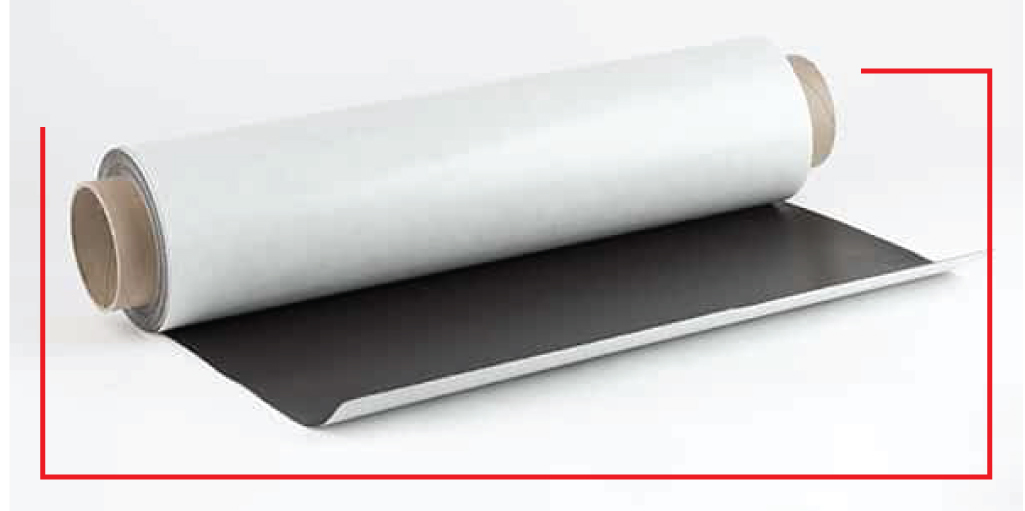Flexible Magnets are a versatile magnet type that come in the form of magnetic sheets and strips. They are used in a wide range of industrial, commercial, and consumer applications . In this blog, we will discuss the processing routes used to manufacture flexible magnets: calendaring and extrusion.
Flexible Magnets: The Calendaring Method
The first processing method for flexible magnets is calendaring. Calendaring is a rolling process used to make flexible, rubber-based magnets into continuous magnet sheets. In the calendaring process, the first step is feeding a granulated compound of elastomer and ferrite powder into the top of the machine. Then, the compound passes through a series of heated rolls that apply high compressive loads. By applying tension to the sheet as it exits the rotors, it is possible to form a continuous roll spanning up to several hundred feet. In some instances, it is possible to achieve mechanical orientation as a result of the applied pressure and utilizing the plate-like shape of the ferrite particles. While hard magnetic powders are most commonly ferrite, neodymium iron boron powders and hybrid ferrite/neodymium iron boron powders are also available. Typically, sheets produced by calendaring have a thickness ranging from 0.012” to 0.250”.
Flexible Magnets: The Extrusion Method
The raw material used in the extrusion processing method is comparable to the raw material used in the calendaring method. In extrusion, a granulated compound of magnetic powder and elastomer is first fed into the machine. Then, the extrusion screw will work against a heated barrel in order to push the compound through a heated die at high pressure. After this, the result will be a continuous strip of material. This material is then collected—it may be wound on a spool, it may be cut into strips of specific lengths, and any cut pieces will be stacked. It is important that the cross-section profile of the strip remains the same along the length of the extrusion. In both extrusion and injection molding, it is important that machinery is equipped with special wear-resistant coatings in order to protect against the abrasive nature of magnetic powders.

